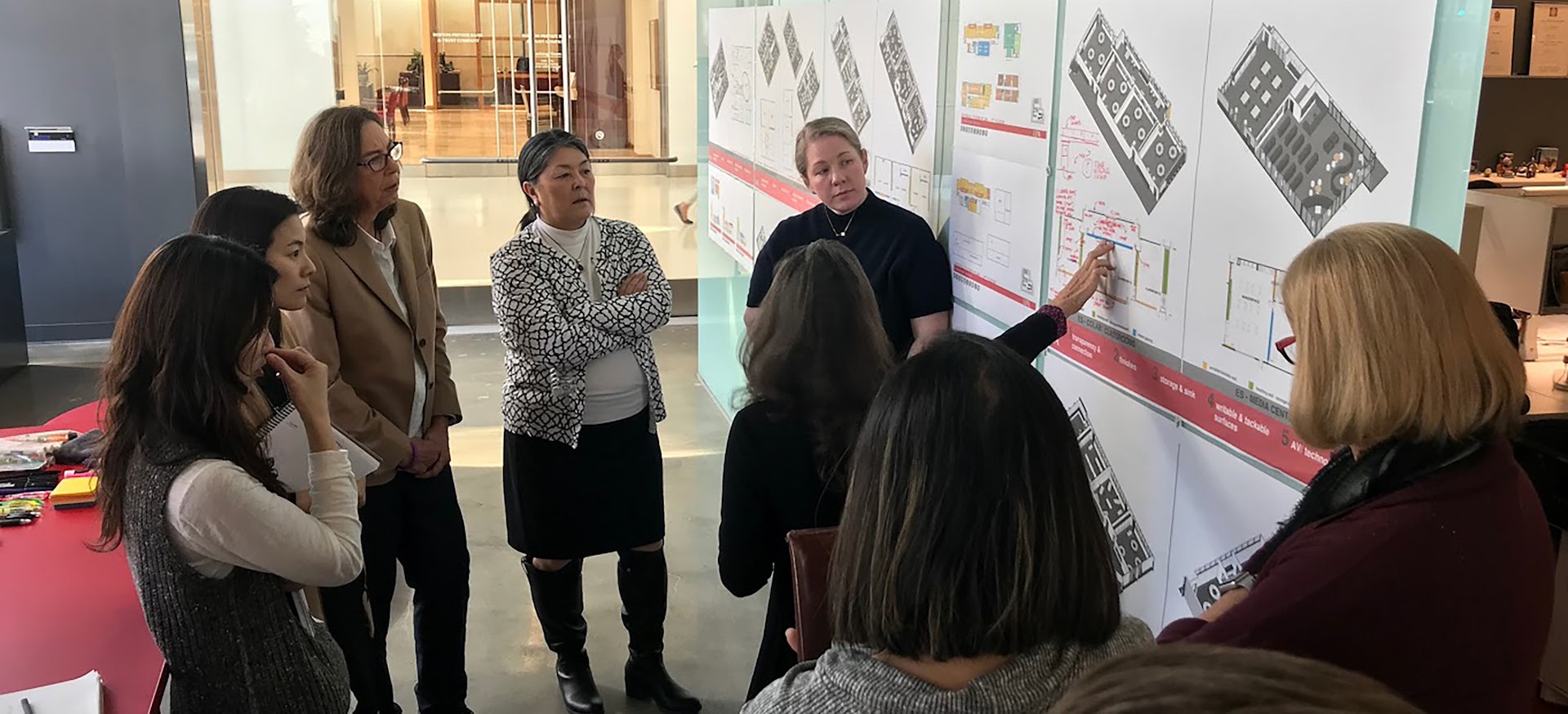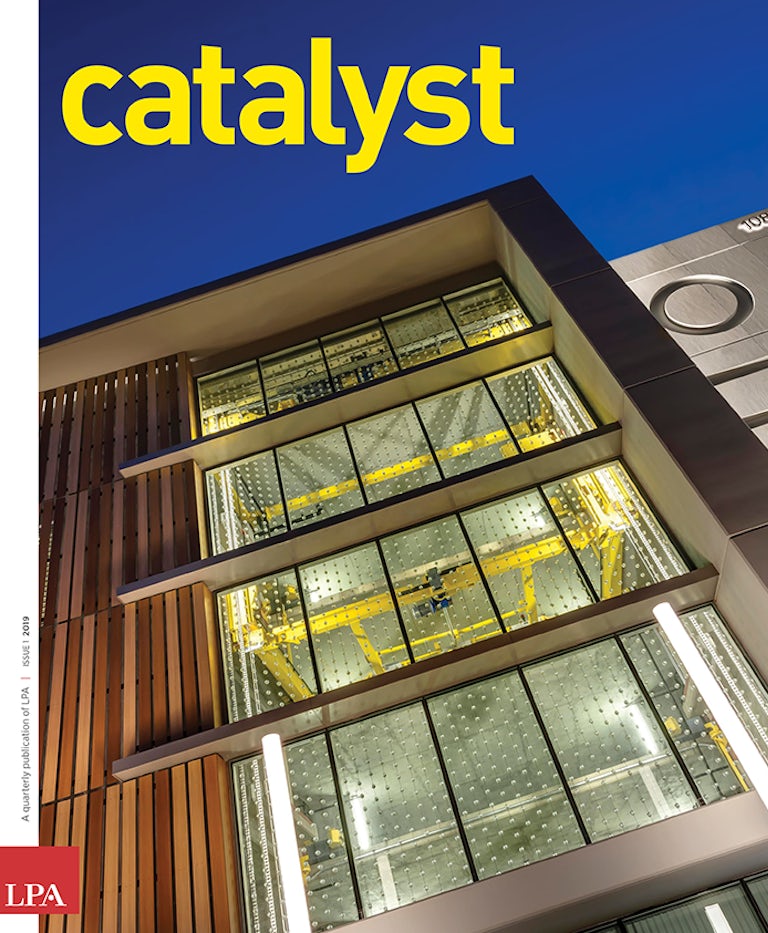When we talk about “better process, better results,” it’s not simply a saying but a belief. It’s the foundation of what we do and how we approach every aspect of a project.
For LPA, a better process is about being diligent in how we approach problem solving. It’s about not making assumptions or preconceptions. It’s about not simply recycling the same idea from another project.
More than anything, a better process starts with asking deeper questions, relentlessly focused on the human experience. When we reach out to stakeholders, we want to move beyond the usual talk and base discussions on research and collaboration, based on clearly defined goals. A better process is about giving clients relevant information, and allowing data-based discussions to inform every element of the design.
LPA’s approach brings resources to the table in a way that other firms can’t. As a fully-integrated company with in-house teams of planners, architects, engineers, landscape architects and interior designers, we bring a diverse set of thought leaders to focus on projects. Our firm is organized into multiple, flexible work teams, each led by a principal and a project manager from project inception to post occupancy.
We’ve also invested in our own research initiative, LPAred, to focus on developing data and research to help our clients and the community make informed decisions. After the job is done, we study how our schools operate, looking for new efficiencies and ways to create facilities that stand the test of time.
What We Mean by “Better Process, Better Results”
More than a slogan, it’s about an approach focused on research, collaboration and the human experience.

Here’s what it is like to work with LPA. In the beginning we work with you to create specific design goals, driven by the client and focused on the people who will use the project. Sustainability and energy efficiency are not after thoughts — they are baked into the core of every discussion. For many projects, the process starts with clearly defining the users and the desired experience, as well as the impact on health and wellness. We want to understand the human aspect of the project, which may not be evident at the first glance.
We’re completely agnostic in these discussions. We’re not framing it around a NextGen concept or making it about the latest trend. Our focus is on guiding clients toward environments that help users bring out their whole self, and to insure their needs drive the process.
Once we know more about the users, we like to start with a “Plan the Plan” meeting, setting up a framework to develop the design. All the variables that would influence the project development are considered, including financial commitments, partnerships, stakeholder involvement, district responsibilities, opportunities, project delivery options and schedule.
As part of the plan, we create a design agenda, a design decision-making roadmap. Frankly, this is something many firms fail to do, but it provides clear guidance for many elements of the project, including the establishment of guiding principles and community engagement. If you establish the plan at the beginning, everyone can see how it’s going to come together. And everyone is working toward the same goals.
As the process moves forward, we structure meetings so everything feeds into the next meeting. At every step we create visual listening experiences, by adding photos and 3D modeling. We’re big fans of virtual reality. Everyone can see the project developing and how it interacts with the different elements.
As specific ideas come together, we dive into every detail. Our engineers can focus on systems and efficiency. Our landscape architects weigh in with advice on water conservation and indigenous vegetation. When we involve our thought leaders and LPAred, we have the ability to go below the surface and consider the underlying elements shaping the education experience.

This doesn’t have to be a long, drawn-out process. For the design of the Menchaca Elementary School for Austin ISD, we went from programming to permitting in six months. Six months! We performed a fully immersive program verification, and a detailed outreach with teachers, students and the community. And then we went deeper and hosted focus groups and tours to design a campus that reflected the goals of the educators.
Originally, Menchaca was conceived as a single building, with interior circulation. But we took a step back and engaged all stakeholders and encouraged them to look at the project through the eyes of students. The discussions turned to the gifts of the site and the opportunity for outdoor learning and using different spaces.
Soon they started pulling the buildings apart and saving the trees. We developed 3D models, illustrating the location of the natural landscape and their impact on the campus. The end result was a collection of buildings, instead of one, creating courtyards that fully engage these great Texas heritage oak trees.
As a project develops, it’s interesting to see how the focus shifts. Our better process is only successful when the facility design reflects the stakeholders’ interests. The better results are spaces that work more efficiently, enhance the mission and operate at maximum efficiency.
These outcomes don’t happen by accident. It comes from focusing talent and experience on a better process. And you can see the results in the relationships we’ve built over the years. We’re proud of our over-50-year track record of helping to assemble teams to create ground-breaking, beloved projects that serve the needs of their communities now and for years to come.
San Antonio-based Kate Mraw is an LPA Associate Principal and Design Director of Interiors.
This story originally appeared in Catalyst Issue 1 2019. Subscribe today to receive Catalyst, a quarterly publication that takes a deep dive into design ideas, industry leaders and initiatives.















